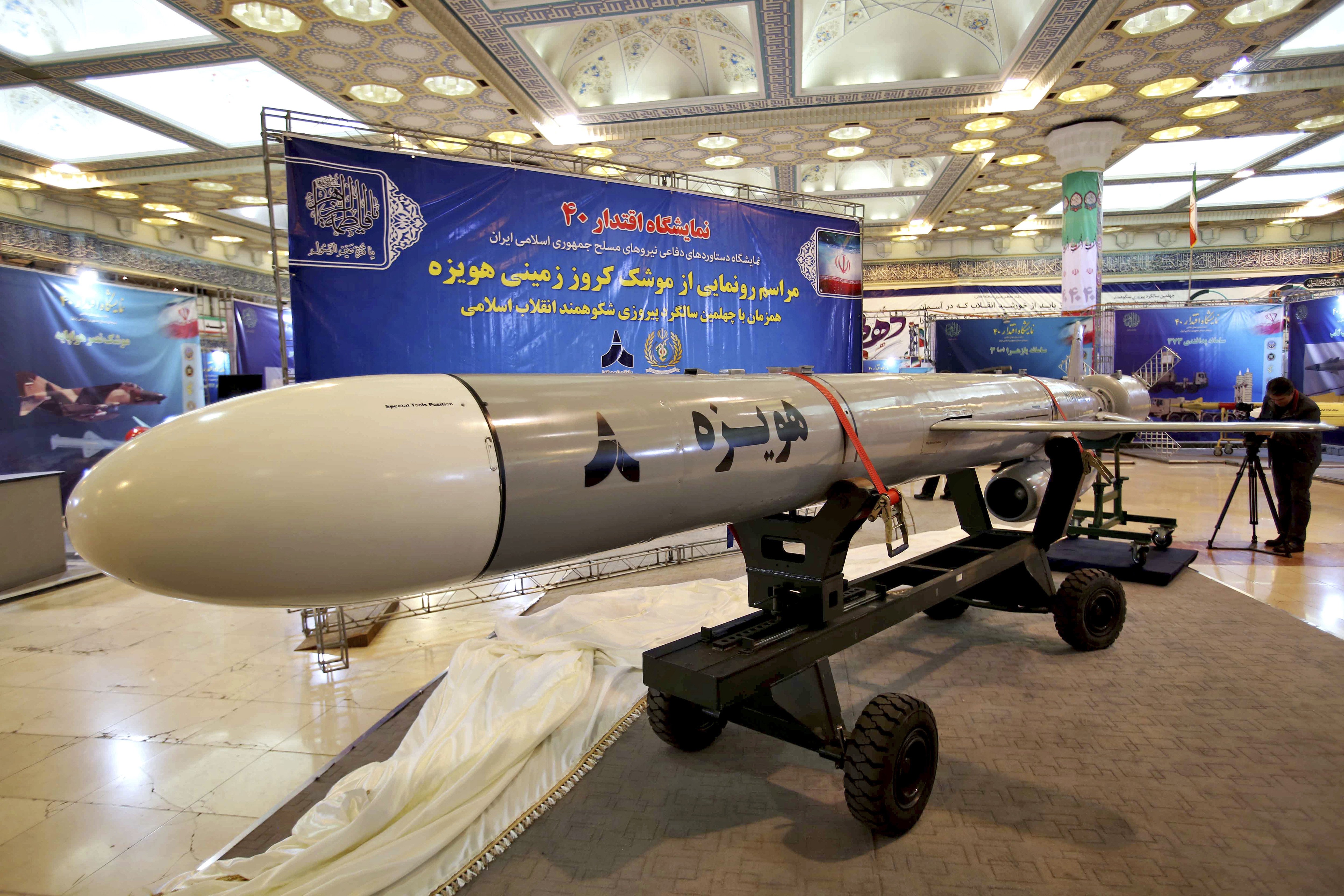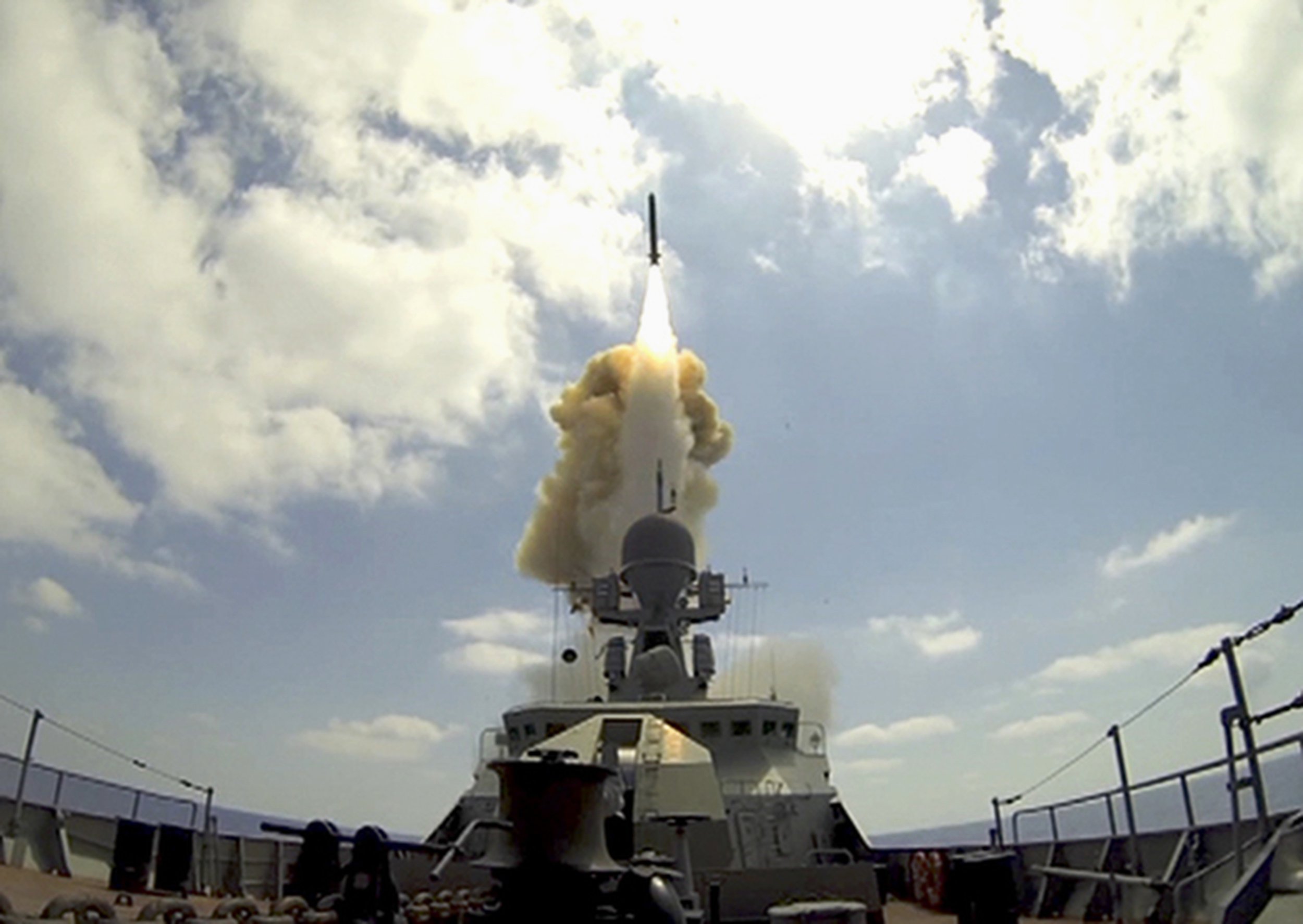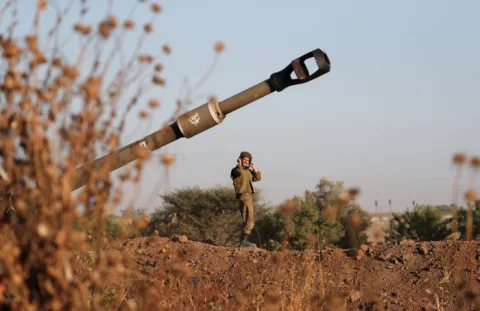The Cruise Missile Arsenal of the Middle East
Cruise missiles are no longer the exclusive domain of a handful of global powers. The proliferation of these strategic missiles has expanded to such rogue states as Iran and even to terrorist organizations like Hezbollah. Special review of the cruise missile threat in the Middle East
Ami Rojkes Dombe
|
12/10/2019
The proliferation of cruise missiles in the Middle East, among countries and non-state terrorist organizations, has expanded in recent years. While in the past only a few countries, worldwide, possessed cutting-edge missiles from this category, the democratization of missile technology knowledge led the development and manufacturing centers to expand beyond the fences of Western control and supervision. China, Iran, North Korea, Russia, and other countries acquired cruise missile knowledge and started expanding their proliferation into the Middle East, among other regions. The implication: cutting-edge munitions found their way to the hands of rogue states and terrorist organizations like Hezbollah, the Yemeni Houthis, and others.
Cruise missiles are not a new threat in the missile world, but the fact that terrorist and guerrilla organizations currently possess them presents a challenge even for countries maintaining modern air defense setups. These missiles were designed to cope with air defense systems using a non-ballistic trajectory, the ability to fly close to the ground or sea surface at high speed and the option of being launched from mobile vehicles. These missiles, fitted with a conventional or nuclear warhead, provide critical firepower during the initial stages of any war.
The Objective: Unsettling the Enemy
High-precision firepower of this type can hit such enemy strategic objectives as C2 centers, command posts, airbases, power stations, and so forth. Such attacks are intended to take the enemy off balance, at the front line as well as in the rear. Accordingly, cruise missiles are regarded as strategic weapons. As stated, in the hands of terrorist or guerrilla organizations, missiles of this category provide the organization with strategic capabilities.
Cruise missiles possess the ability to maneuver during flight, which make them difficult to engage by intercepting missiles. Additionally, they can climb to a high level before hitting their objective, and execute fast maneuvers to shake off the intercepting missile. The more advanced missiles in this category are even fitted with a dual-target acquisition mechanism – both RF and optical. Using the dual-target acquisition method, cruise missiles can operate in denial areas – areas where the enemy employs electronic warfare to jam the missiles' RF mechanisms. Optical acquisition is more difficult to jam or disrupt.
Extensive Proliferation
One of the better-known cruise missiles in the Middle East is the C-802, an Anti-Ship Cruise Missile (ASCM) for the marine environment. A missile of this family hit the Israeli Navy frigate Hanit during the Second Lebanon War (2006). This cruise missile underwent an upgrading process in Iran. Back in 1995, Iran had acquired about 100 C-802 and C-801K missiles from China. The missile was unveiled in 1989 with a turbojet engine and an effective range of 75 miles. Iran conducted the first trial of the C-802 in 1996. The missile can handle targets within a minimum range of seven miles.

Iran's Hubeiza missile. Photo: AP
The Yemeni Houthis also possess cruise missiles. This is yet another terrorist organization receiving support from Iran. Among other things, the organization possesses C-802, Quds, and Soumar missiles made in Iran. According to various estimates, the Soumar missile is a reincarnation of the Russian-made Kh-55 missiles smuggled from Ukraine to Iran in the early 2000s. The cruise missiles of Hezbollah and the Houthis are delivered to these organizations by Iran's Islamist Revolutionary Guard Corps (IRGC), having been manufactured by Iran's defense industry, the AIO Company, which also developed other cruise missiles, designated Ya-Ali and Hoveizeh.
Saudi Arabia has Harpoon and Storm Shadow (French designation Scalp EG) cruise missiles. These missiles are manufactured by US and European industries, respectively.
Another Middle Eastern country that has cruise missiles is Egypt. According to open-source reports, Egypt, too, possesses US-made Harpoon missiles and has recently sought to acquire Storm Shadow missile from France – a request to which the USA objected.
France has already announced that it would manufacture a restriction-bypassing version of this missile for sale to Egypt. Other reports claim that Cairo also has Chinese-made HY-2 and SY-1 ASCMs. Current reports maintain that Egypt is also interested in the BrahMos missile manufactured by India and Russia.
Along with Saudi Arabia, Iran, and Egypt, Syria also possesses cruise missiles, mainly of the ASCM category. The Syrian cruise missile arsenal includes the SS-N-2C (STYX), SS-N-3B (Shaddock) and SS-N-26 (Strobile, Russian designation Yakhont) missiles.
Israeli Cruise Missiles
Facing the cruise missile arsenals of the countries around us, another Middle Eastern country that possesses cruise missiles – according to foreign sources – is Israel. According to open-source reports, the Israeli Navy possesses various types of ASCMs. Israeli cruise missiles for the land theater include the Delilah and Popeye missiles. Prime Minister Benjamin Netanyahu has recently had his photograph taken at an IAI plant, alongside a new cruise missile model.
Owing to the cutting-edge capabilities of cruise missiles and the fact that they are difficult to intercept, these missiles are subject to the close supervision of MTCR – the Missile Technology Control Regime. Additionally, the USA applies its own independent control regime – ITAR (International Traffic in Arms Regulations) – to prevent the worldwide proliferation of cruise missiles. As stated, this regime has been applied recently to prevent the sale of European-made cruise missiles to Egypt.

Launched Russian cruise missile (archive). Photo: AP
At the same time, despite the supervision and control efforts, the proliferation of cruise missiles is expected to expand owing to the democratization of missile technology. Countries like China, Russia, Iran, and North Korea possess the knowledge required in order to develop and manufacture cruise missiles and do not always conform to the US or European control regimes. So how is this knowledge being transferred? Well, in several ways. Firstly, high education in the field of exact sciences has become more accessible over the last decades. Students from various countries can now study at the world's leading faculties, then return to their countries and pass on the knowledge they had acquired.
Knowledge & the Black Market
Another method for distributing knowledge is the black market. The case mentioned previously, involving the sale of Russian-made cruise missiles by Ukraine (a former member of the USSR) to Iran, is just one case. In the past, Scud missiles were transferred from Egypt to North Korea. To the same extent, it may be assumed that missile parts or blueprints may be transferred from North Korea to Iran and then to Hezbollah and the Houthis. Admittedly, this activity has not consisted of many cases thus far, but a few incidents of missiles having been sold on the black market did occur in the past, and the knowledge was, indeed, transferred.
Another distribution method is collecting findings from the battlefield to scientific laboratories. The US Tomahawk missile attack against Syria in 2014 employed dozens of cruise missiles. This attack produced findings that passed from Syria to other countries. Similarly, some of the attacks attributed to Israel in Syria in recent years included – according to various estimates – the use of cruise missiles. These missiles, too, often leave findings in the target area, and such findings are passed on.
Without a doubt, the proliferation of cruise missiles to rogue states and to terrorist and guerrilla organizations is expected to expand in the coming years. The reasons for this expansion are the advantages that this particular ordnance provides to the user, even opposite state-of-the-art air defense systems, the fact that such knowledge is available to cash-hungry countries, and the nonchalance displayed by such countries as Iran, North Korea or China when they sell such weapon systems even to non-state organizations.
Cruise missiles are no longer the exclusive domain of a handful of global powers. The proliferation of these strategic missiles has expanded to such rogue states as Iran and even to terrorist organizations like Hezbollah. Special review of the cruise missile threat in the Middle East
The proliferation of cruise missiles in the Middle East, among countries and non-state terrorist organizations, has expanded in recent years. While in the past only a few countries, worldwide, possessed cutting-edge missiles from this category, the democratization of missile technology knowledge led the development and manufacturing centers to expand beyond the fences of Western control and supervision. China, Iran, North Korea, Russia, and other countries acquired cruise missile knowledge and started expanding their proliferation into the Middle East, among other regions. The implication: cutting-edge munitions found their way to the hands of rogue states and terrorist organizations like Hezbollah, the Yemeni Houthis, and others.
Cruise missiles are not a new threat in the missile world, but the fact that terrorist and guerrilla organizations currently possess them presents a challenge even for countries maintaining modern air defense setups. These missiles were designed to cope with air defense systems using a non-ballistic trajectory, the ability to fly close to the ground or sea surface at high speed and the option of being launched from mobile vehicles. These missiles, fitted with a conventional or nuclear warhead, provide critical firepower during the initial stages of any war.
The Objective: Unsettling the Enemy
High-precision firepower of this type can hit such enemy strategic objectives as C2 centers, command posts, airbases, power stations, and so forth. Such attacks are intended to take the enemy off balance, at the front line as well as in the rear. Accordingly, cruise missiles are regarded as strategic weapons. As stated, in the hands of terrorist or guerrilla organizations, missiles of this category provide the organization with strategic capabilities.
Cruise missiles possess the ability to maneuver during flight, which make them difficult to engage by intercepting missiles. Additionally, they can climb to a high level before hitting their objective, and execute fast maneuvers to shake off the intercepting missile. The more advanced missiles in this category are even fitted with a dual-target acquisition mechanism – both RF and optical. Using the dual-target acquisition method, cruise missiles can operate in denial areas – areas where the enemy employs electronic warfare to jam the missiles' RF mechanisms. Optical acquisition is more difficult to jam or disrupt.
Extensive Proliferation
One of the better-known cruise missiles in the Middle East is the C-802, an Anti-Ship Cruise Missile (ASCM) for the marine environment. A missile of this family hit the Israeli Navy frigate Hanit during the Second Lebanon War (2006). This cruise missile underwent an upgrading process in Iran. Back in 1995, Iran had acquired about 100 C-802 and C-801K missiles from China. The missile was unveiled in 1989 with a turbojet engine and an effective range of 75 miles. Iran conducted the first trial of the C-802 in 1996. The missile can handle targets within a minimum range of seven miles.

Iran's Hubeiza missile. Photo: AP
The Yemeni Houthis also possess cruise missiles. This is yet another terrorist organization receiving support from Iran. Among other things, the organization possesses C-802, Quds, and Soumar missiles made in Iran. According to various estimates, the Soumar missile is a reincarnation of the Russian-made Kh-55 missiles smuggled from Ukraine to Iran in the early 2000s. The cruise missiles of Hezbollah and the Houthis are delivered to these organizations by Iran's Islamist Revolutionary Guard Corps (IRGC), having been manufactured by Iran's defense industry, the AIO Company, which also developed other cruise missiles, designated Ya-Ali and Hoveizeh.
Saudi Arabia has Harpoon and Storm Shadow (French designation Scalp EG) cruise missiles. These missiles are manufactured by US and European industries, respectively.
Another Middle Eastern country that has cruise missiles is Egypt. According to open-source reports, Egypt, too, possesses US-made Harpoon missiles and has recently sought to acquire Storm Shadow missile from France – a request to which the USA objected.
France has already announced that it would manufacture a restriction-bypassing version of this missile for sale to Egypt. Other reports claim that Cairo also has Chinese-made HY-2 and SY-1 ASCMs. Current reports maintain that Egypt is also interested in the BrahMos missile manufactured by India and Russia.
Along with Saudi Arabia, Iran, and Egypt, Syria also possesses cruise missiles, mainly of the ASCM category. The Syrian cruise missile arsenal includes the SS-N-2C (STYX), SS-N-3B (Shaddock) and SS-N-26 (Strobile, Russian designation Yakhont) missiles.
Israeli Cruise Missiles
Facing the cruise missile arsenals of the countries around us, another Middle Eastern country that possesses cruise missiles – according to foreign sources – is Israel. According to open-source reports, the Israeli Navy possesses various types of ASCMs. Israeli cruise missiles for the land theater include the Delilah and Popeye missiles. Prime Minister Benjamin Netanyahu has recently had his photograph taken at an IAI plant, alongside a new cruise missile model.
Owing to the cutting-edge capabilities of cruise missiles and the fact that they are difficult to intercept, these missiles are subject to the close supervision of MTCR – the Missile Technology Control Regime. Additionally, the USA applies its own independent control regime – ITAR (International Traffic in Arms Regulations) – to prevent the worldwide proliferation of cruise missiles. As stated, this regime has been applied recently to prevent the sale of European-made cruise missiles to Egypt.

Launched Russian cruise missile (archive). Photo: AP
At the same time, despite the supervision and control efforts, the proliferation of cruise missiles is expected to expand owing to the democratization of missile technology. Countries like China, Russia, Iran, and North Korea possess the knowledge required in order to develop and manufacture cruise missiles and do not always conform to the US or European control regimes. So how is this knowledge being transferred? Well, in several ways. Firstly, high education in the field of exact sciences has become more accessible over the last decades. Students from various countries can now study at the world's leading faculties, then return to their countries and pass on the knowledge they had acquired.
Knowledge & the Black Market
Another method for distributing knowledge is the black market. The case mentioned previously, involving the sale of Russian-made cruise missiles by Ukraine (a former member of the USSR) to Iran, is just one case. In the past, Scud missiles were transferred from Egypt to North Korea. To the same extent, it may be assumed that missile parts or blueprints may be transferred from North Korea to Iran and then to Hezbollah and the Houthis. Admittedly, this activity has not consisted of many cases thus far, but a few incidents of missiles having been sold on the black market did occur in the past, and the knowledge was, indeed, transferred.
Another distribution method is collecting findings from the battlefield to scientific laboratories. The US Tomahawk missile attack against Syria in 2014 employed dozens of cruise missiles. This attack produced findings that passed from Syria to other countries. Similarly, some of the attacks attributed to Israel in Syria in recent years included – according to various estimates – the use of cruise missiles. These missiles, too, often leave findings in the target area, and such findings are passed on.
Without a doubt, the proliferation of cruise missiles to rogue states and to terrorist and guerrilla organizations is expected to expand in the coming years. The reasons for this expansion are the advantages that this particular ordnance provides to the user, even opposite state-of-the-art air defense systems, the fact that such knowledge is available to cash-hungry countries, and the nonchalance displayed by such countries as Iran, North Korea or China when they sell such weapon systems even to non-state organizations.



